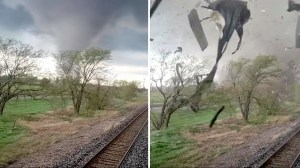In a drenching episode of the PBS Digital Studios series Eons, host Blake de Pastino explained why it rained for two million years during the late Triassic Period, the first period of the Mesozoic Era. These rains, known as the Carnian Pluvial Event, happened as Pangea began to separate and caused complete extinction of organisms that were eventually replaced by the dinosaurs in the Jurassic Period.
At the beginning of the Triassic Period, with the continents locked together from pole-to-pole in the supercontinent of Pangea, the world is hot, flat, and very, very dry. But then 234 million years ago, the climate suddenly changed for the wetter.






